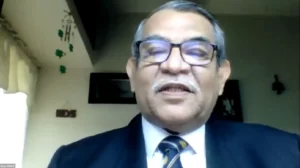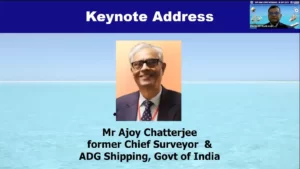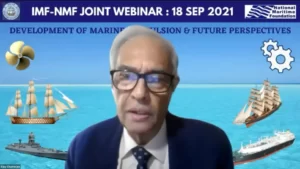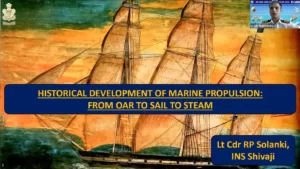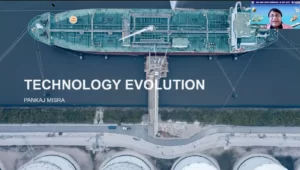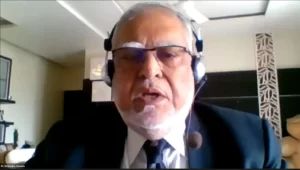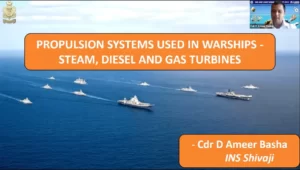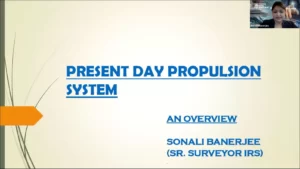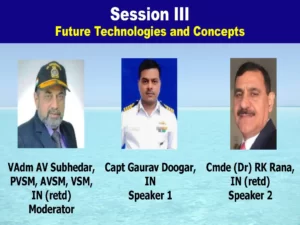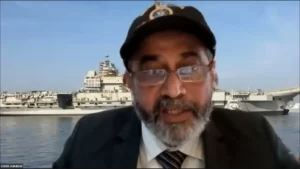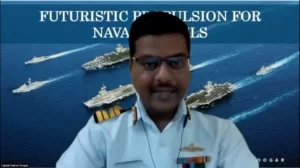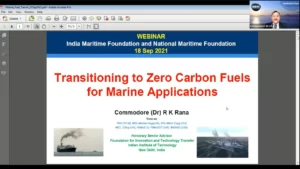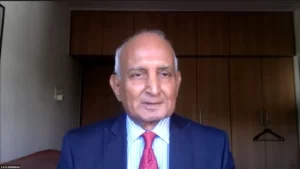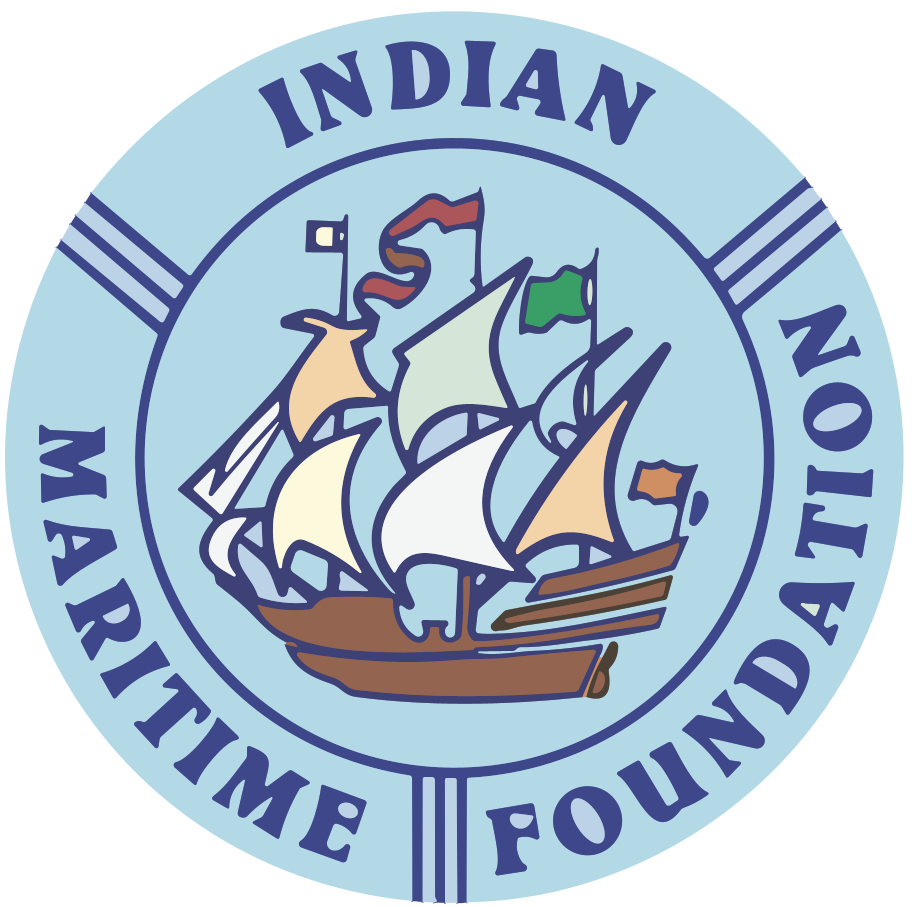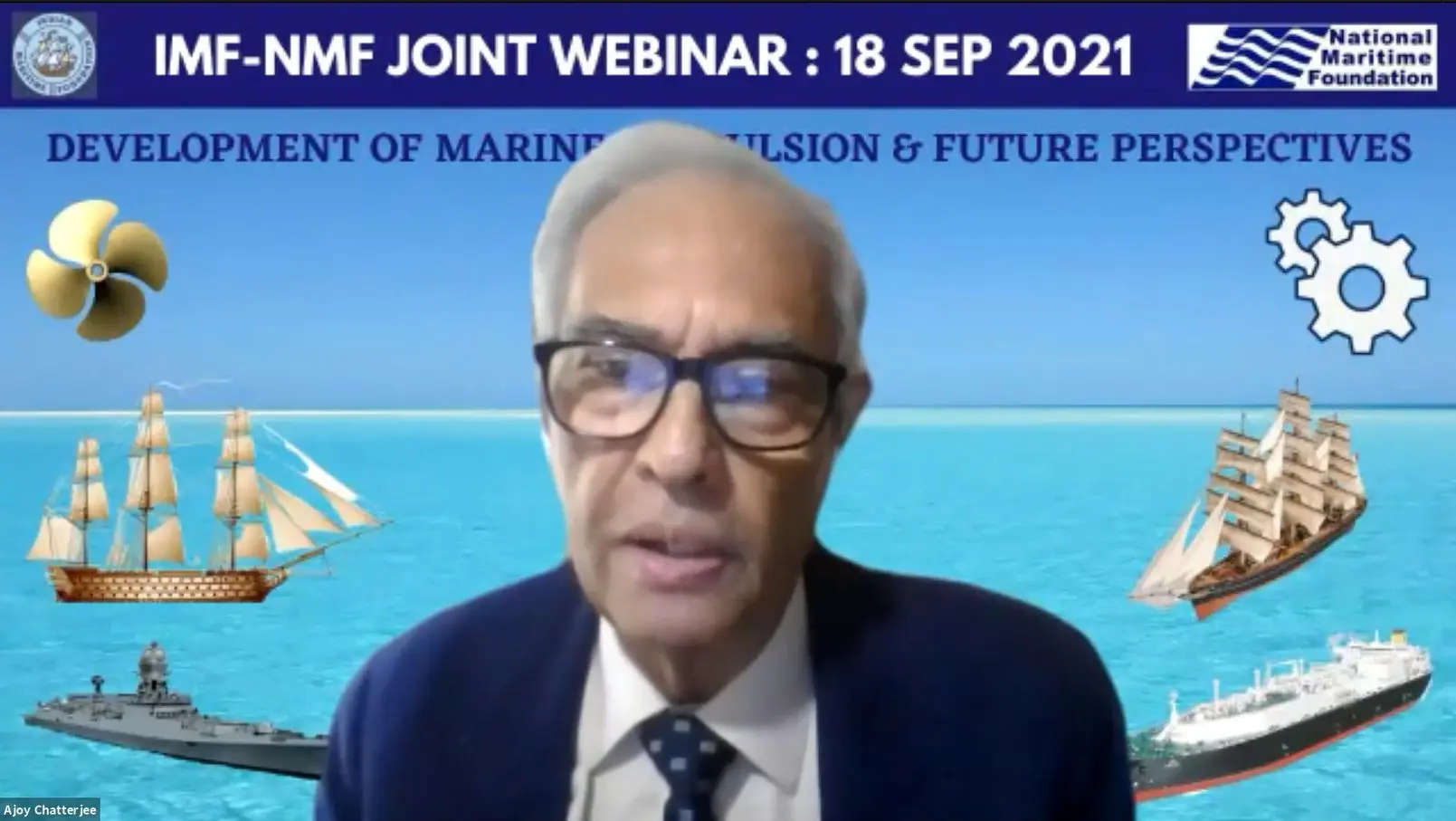
Introduction
The IMF conducted its Annual Seminar on the theme “Development of Marine Propulsion and Future Perspectives” on 18th Sept 2021. Due to the Covid pandemic outbreak, the event could not be conducted in 2020 and as the Covid restrictions had not been entirely lifted, this year’s event was conducted as an online Webinar. For the first time too, the event was conducted jointly with the National Maritime Foundation. The Webinar commenced with a short introduction on the theme by the Convener, RAdm RJ Nadkarni AVSM VSM, IN (retd), who also briefed the attendees on the programme and conduct of the Webinar, along with some basic ground rules to be followed.
Welcome Address
The Welcome Address was delivered by Cmde Ajay Chitnis SC NM, IN (retd) Vice President, IMF on behalf of the President, Capt Anand Dixit who could not, unfortunately, attend the Webinar as he was indisposed. He extended a special welcome to all speakers and moderators on behalf of IMF and NMF and expressed gratitude to them for giving their valuable time to participate in this event. He thereafter gave a brief overview of how marine propulsion had developed over the ages from the time the first boat was built, about 2 million years ago. Thereafter, ships had seen the use of oars; and then sails for much of the first two millennia CE. The first half of the 19th century heralded the advent of steamships, though fast-sailing clippers continued to ply the seas for some years. The 20th century saw the most rapid development in marine propulsion, with fuel oil replacing coal as the primary fuel source. He highlighted that in addition to the evolution of the propulsion systems, there had been continuous improvements in hull designs, propellers, rudders as well as various auxiliary machinery, which had all contributed to this development. He ended by stating that the eminent speakers would speak more about this long journey of marine propulsion and what lay ahead.
Keynote Address
Following the Welcome Address, the Keynote Address was given by Mr Ajoy Chatterjee, former Chief Surveyor and Addl DG Shipping to the Govt of India. He commenced with a brief overview of the evolution of ships and their propulsion systems, highlighting that this process had seen three ‘revolutions’, starting with the use of sails, then to coal and then to fuel oil. The world was now entering the ‘fourth revolution with the transition to alternative fuels and propulsion systems. This was inescapable because while diesel engines had several advantages, they also contributed to the build-up of greenhouse gases such as CO2, which caused global warming and climate change. He stated that legislation had begun to be formulated for moving to alternative fuels such as LNG, LPG, hydrogen, methanol, biofuels and ammonia, to have a ‘carbon neutral fleet’ by 2050.
He opined that there could be no ‘one size fits all’ solution, but that a goal-based approach using multiple options was the need of the hour. It would also take several years to transition completely to alternative fuels and engines and during that time existing ships with conventional engines would continue to operate, which would create a situation called ‘technology lock in’ wherein a dominant incumbent technology created barriers to the adoption of alternatives. He highlighted how maritime disasters – specifically mentioning the Titanic, Exxon Valdez and Herald of Free Enterprise accidents – had resulted in groundbreaking regulations and safety conventions such as SOLAS having been implemented. He also discussed an interesting futuristic concept of Maritime Autonomous Surface Ships(MASS) of Degrees 1 to 4 identified by IMO, the degrees indicating the level of human interaction. Degree 1 had seafarers onboard (as already existed) while Degree 4 was a fully autonomous ship using Artificial Intelligence, which could provide cost savings, increased efficiency and environmental benefits, and possibly improved safety through the reduction of human errors. Of course, in making ships completely autonomous, there was also a risk due to technical failure, security, cyber breach or other incidents. The speaker concluded his talk by expressing his hope that the discussions which ensued would cover the development of marine propulsion in greater detail and help in formulating a way ahead.
Session I
Session I covered the topic “Historical Evolution of Marine Propulsion.” The Moderator for the session was VAdm IC Rao, PVSM AVSM, IN (retd) and the two were Lt Cdr RP Solanki who spoke on “Historical Development of Marine Propulsion : From Oar to Sail to Steam” and Mr Pankaj Misra who spoke on the “Evolution of Marine Propulsion” especially with regard to merchant ships.
Lt Cdr Solanki
In his talk, Lt Cdr Solanki covered the development of boats and ships, and the evolution in their propulsion. Early ships were propelled by human muscle power transmitted to the water by oars and subsequently, the force exerted by the wind was also exploited. As ships evolved, they became more complex with not just one, but two or even three masts. And at some point in time, oars disappeared altogether and were replaced entirely by sails. The Industrial Revolution brought about a revolution in marine propulsion systems too, starting with the reciprocating steam engine, which could propel a ship without the help of oars or sail. Initially, a paddlewheel was used to transmit the energy to the water but was later replaced by the vastly more efficient screw propeller. The earliest steam engines were the Savery steam pump and the Newcomen engine, but it was the James Watt steam engine which was finally adopted for fitment on ships, with the first such engine installed onboard the SS Great Western, a trans-Atlantic liner. These early reciprocating steam engines did, however, face several problems and were ultimately replaced by the steam turbine developed by Sir Charles Parsons. He concluded his presentation by remarking that the evolution of marine propulsion systems has been a testament to the perseverance and innovative skills of humankind in general.
Mr Pankaj Misra
Mr Pankaj Misra, in his introduction, stated that the shipping industry has come a long way from using the simple log to modern autonomous ships and that technology had played a key role in this development. He highlighted the main drivers of this technology evolution as the increasing demands of trade, energy efficiency and the present focus on decarbonisation. Thereafter, he gave a chronological overview of the various marine diesel engines that had been developed for ships, initially by Sulzer which made it the leading manufacturer of marine engines by the 1920s. In the 1930s airless fuel injection became standard in all types of engines, followed by turbocharging. The first low-speed marine engine running on gas entered service in 1972, followed by a change in the scavenging process from loop to uniflow in 1983 with the introduction of RTA, low-speed engines. In 1986, Wartsila began the development of dual-fuel engines, the first being the gas diesel engine with high-pressure gas injection, which was followed by the world’s first large electronically controlled low-speed engine, with common rail injection. The year 1991 saw the development of the Wartsila spark igniter engine, followed by the first RT Flex engine in Sep 2001. In Feb 2011, a project to develop dual-fuel engine gas technology for low-speed engines commenced complying with IMO Tier 3 emissions regulations, resulting in the introduction of Generation X engines later that year. In 2013, the X-DF dual-fuel engines using gas were introduced, and in 2015, Wartsila converted the first commercial vessel to run on methanol and also launched the Wartsila W31, which was the world’s most fuel-efficient engine. He also covered the concepts of Energy Efficiency Design Index (EEDI) and hybrid engines, which combined conventional engines, and other unconventional energy sources. These significantly improved engine performance, reduced emissions, increased redundancy and reduced maintenance. He concluded by reiterating that technology evolution would continue regardless of the fuel being used. Investing in fuel flexibility and the combustion engine would mitigate compliances and business risks introduced by future fuels.
Session II
Session II covered the topic “Present Day Propulsion Systems.” The Moderator for the session was Dr BK Saxena, former Principal Tolani Maritime Institute, and the two speakers were Cdr D Ameer Basha who covered “Propulsion Systems used in Warships – Steam, Diesel And Gas Turbine” and Ms Sonali Banerjee who spoke on Present-day Propulsion Systems being used in Merchant Ships.”
Cdr D Ameer Basha
Cdr Basha, after a short introduction, went on to describe the various engines presently in vogue, how they had evolved and the ships they were fitted on in the Indian Navy. He first described the evolution of the steam engine – both the reciprocating engine as well as steam turbines; then went on to diesel propulsion and finally gas turbines. He also highlighted engines that combined two types of propulsion such as the Combined Diesel Or Gas (CODOG) system. He ended his presentation by stating that over the past 74 years since Independence, the marine engineers of the Indian Navy had risen to the challenge of inducting, operating and maintaining a diverse range of propulsion systems and ensured that their ships were always ready for sea.
Ms Sonali Banerjee
Ms Sonali Banerjee, during her talk, stated that the selection of the most suitable propulsion system for a ship was not just about movement of the ship in the water, but also included other factors safety standards, environment friendliness and cost-effectiveness. She thereafter discussed different engines fitted on various sizes and categories of merchant ships from the biggest to the smallest. In bigger ships, the propulsion system typically consisted of long-stroke / super long stroke, slow speed, two-stroke marine diesel engine. LNG carriers had a ‘boil-off gas’ problem and consequently, used steam turbines till the year 2000, but were now shifting to dual-fuel diesel-electric propulsion, as well as more innovative systems. Offshore vessels, diving support vessels and cruise ships too had shifted to diesel-electric propulsion systems. Other systems such as waterjets, directional propellers and thruster units were found on smaller commercial vessels and anchor handling tugs. She also talked about the environmental challenges caused by emissions and the regulations in force to mitigate their effects such as NOX and sulphur regulations passed by the Marine Environment Protection Committee (MEPC). She also covered the concept of Energy Efficiency Existing Ship Index (EEXI) and Carbon Intensity Indicator (CII) adopted by IMO in MEPC 76. She concluded by opining that innovative propulsion designs and fuels may not be adequate to meet the goals of IMO and that deliberations were still ongoing between the flag states, industry leaders and the IMO, as to how best to meet these goals.
Session III
Session II covered the topic “Future Technologies and Concepts” The Moderator for the session was VAdm AV Subhedar, PVSM AVSM, IN (retd) who after a brief introduction and the two speakers were Capt Gaurav Doogar who covered “Futuristic Propulsion For Naval Vessels” and Cmde (Dr) RK Rana, IN (retd) who spoke on “Transitioning To Zero Carbon Fuels For Marine Applications.”
Capt Gaurav Doogar
After a brief overview of the evolution of ships and propulsion, Capt Doogar stated that there has been a revolution in propulsion technology through a two-pronged approach of designing alternative propulsion systems as well as using alternative fuels. He elaborated on the concept of ‘powering margins’ and also explained how the powering requirement had a cubic relation with the speed of the vessel. He then talked about the latest warship propulsion technologies starting with various diesel and gas turbine combinations such as CODAG, CODOG, COGAG / COGOG, and CODLAG (with Electric Motor). He stated that several navies were now following a system of hybrid propulsion, which had resulted in a decrease in the number of prime movers and other advantages, adding that it would be beneficial to use this propulsion for vessels, which were required to use cruising and loitering speeds around 45% of the time. Thereafter he went on to discuss Integrated Full Electric Propulsion (IFEP), and added that there was also considerable R&D in developing 99% superconducting electric motors, which promised to be about 1/6th the weight of conventional motors. He then talked about podded propellers, which were increasingly finding applicability in warships, such as the French Mistral-class. He also covered futuristic unmanned surface vessels whose propulsion/control technology would see much R&D by all advanced countries in coming years. He then discussed the use of fuel alternatives, which included renewable fuel sources such as wind, solar, fuel cells and batteries and also talked about the advantages and disadvantages of nuclear propulsion. He concluded by stating that the power demands of a warship are likely to surpass the propulsion power requirement in future with the induction of weapon systems such as directed energy weapons and electromagnetic real guns.
Cmde (Dr) RK Rana, IN (retd)
During his introduction, Cmde Rana highlighted the dangers posed to the environment due to the increased GHG emissions and said that the IMO had now adopted a strategy of reducing GHG emissions by 50% by 2050. He stated that vessels already in operation would have to adopt different technologies to meet these emission targets, but for new ships, there were several options to transition to alternative fuels and described the pros and cons of each of these in detail. LNG produced minimal emissions, but also posed the challenges of methane slip. LPG was widely available and easy to handle and store, but had limited bunkering and did not eliminate CO2 emissions. Methanol and ethanol were easy to handle as ‘drop in’ fuels and also benefitted from a well developed, global network, but special care was needed due to their toxic and flammable nature. Biofuels were carbon neutral and reduced CO2 emissions, but mass-scale production was costly. He said that the future fuels could be hydrogen and ammonia, which were carbon-free and had much lower energy density than traditional fuel loads. The storage of liquid or compressed hydrogen remained a technical challenge and, therefore, using ammonia as a hydrogen carrier would be a preferred option, though bunkering infrastructure would need to be developed and ammonia toxicity also factored. He then discussed the main machinery technology that would have to be implemented to use these alternative fuels. He highlighted that IIT Delhi had successfully demonstrated the use of hydrogen in a spark-ignition engine generator and had also solved one of the major challenges while using hydrogen – that of backfire. He stated that PM Modi had announced the launch of the National Hydrogen Mission during Independence Day and that several Indian companies including Reliance, IOC and Tata were also investing heavily in hydrogen as clean energy. He then explained the benefits of methanol over LNG or LPG in terms of reducing emissions and particulate matter, as well as handling. He concluded by stating that though the transition to alternative fuels was gaining momentum, only 1% of ships currently in operation used them. He also said that though naval vessels were not subject to IMO requirements, they must also join the global emissions reduction efforts. Specifically, the Indian Navy should leverage the knowledge of renowned academic institutions and progress studies on progressively retrofitting existing diesel engines to run on methanol or hydrogen. Later, in response to a question by the Moderator on naval ships becoming IMO complaint, he stated that naval vessels had to look at three aspects: design (such as the use of bulbous bows), minimising engine operations and acceptable alternative fuels and highlighted the initiatives taken by other navies worldwide.
Concluding Address
The Concluding Address was delivered by VAdm SKK Krishnan, AVSM VSM, IN (retd). He highlighted certain important challenges which would shape the development of marine propulsion in the future, such as the logistics involved in bunkering ships with alternative fuels, achieving higher engine efficiency as also the induction of autonomous ships.
He commenced by recounting his previous interaction with the IMF when he was the CO, INS Shivaji. He stated that while the historical evolution of marine propulsion had been well covered by various speakers, the most important issue which ran common thread amongst all this is the issue of emission adding that while naval ships were exempted from such regulations, the merchant ships had to follow them very very closely. According to him, the main challenge would be the logistics of bunkering ships with the alternative fuels at various ports as also creating a pool of manpower to carry out bunkering safely. The second main issue was efficiency upgrade, which he said would be driven by the commercial requirements of the merchant navy foremost, but also concerned warships as it gave them the ability to remain at sea longer without refuelling. The third issue concerned autonomous ships, which was very important in his opinion and was also being researched by most advanced navies. He said such vessels could be used for routine, repetitive tasks such as torpedo recovery as well as conventional operations such as anti-submarine warfare, which required a lot of time and effort to remain on task. As regards merchant ships, he said that the company NYK was going in for semi-autonomous vessels with very minimal manning. He then spoke about the various types of propulsion systems that were talked about, highlighting that although electric propulsion had come in several years ago, it was only now that it was being adopted in a big way. As regarding the more futuristic systems such as those using solar power, he highlighted that while it could take a while before it was inducted on ships, some boats in Kerala were also using solar panels. He opined that there could have been some more discussion on nuclear power and wondered why there was such a veil of secrecy over a system like a nuclear reactor, which only replaces the boiler as the means of producing steam. He conclude by stating that India still lagged in shipbuilding, but needed to have more of a stake in the futuristic propulsion technologies if they wished to be competitive with other nations.
Vote of Thanks
Following the Concluding Address, the Vote of Thanks was delivered by Cmde Ajay Chitnis, SC NM, IN (retd). On behalf of the President IMF, President Emeritus IMF as well as the NMF, he thanked the Keynote Speaker, Moderators and Session Speakers of the three sessions, the Post Lunch and Concluding Speakers, as well as all attendees for their participation. He also complimented the Convener for the preparations put in towards organising the Webinar as well as for the technical arrangements made to ensure a glitch-free event. He exhorted the participants to become members of the IMF and requested the Editor Seagull to send them each a copy of the latest edition of the journal.
Conclusion
The Webinar concluded with a short online poll conducted by the Convener, to obtain immediate feedback from the attendees on their overall impressions as well as their opinions about certain concepts covered by the participants. He also requested them to provide more detailed feedback through a survey, which they would all get once the Webinar ended and which would help the IMF in planning future events.
All speakers were virtually ‘presented’ mementoes of the IMF on completion of their respective talk/session by the Vice President IMF.
The Webinar was conducted on the Zoom platform and simultaneously livestreamed on YouTube, a recording of which may be viewed here.

